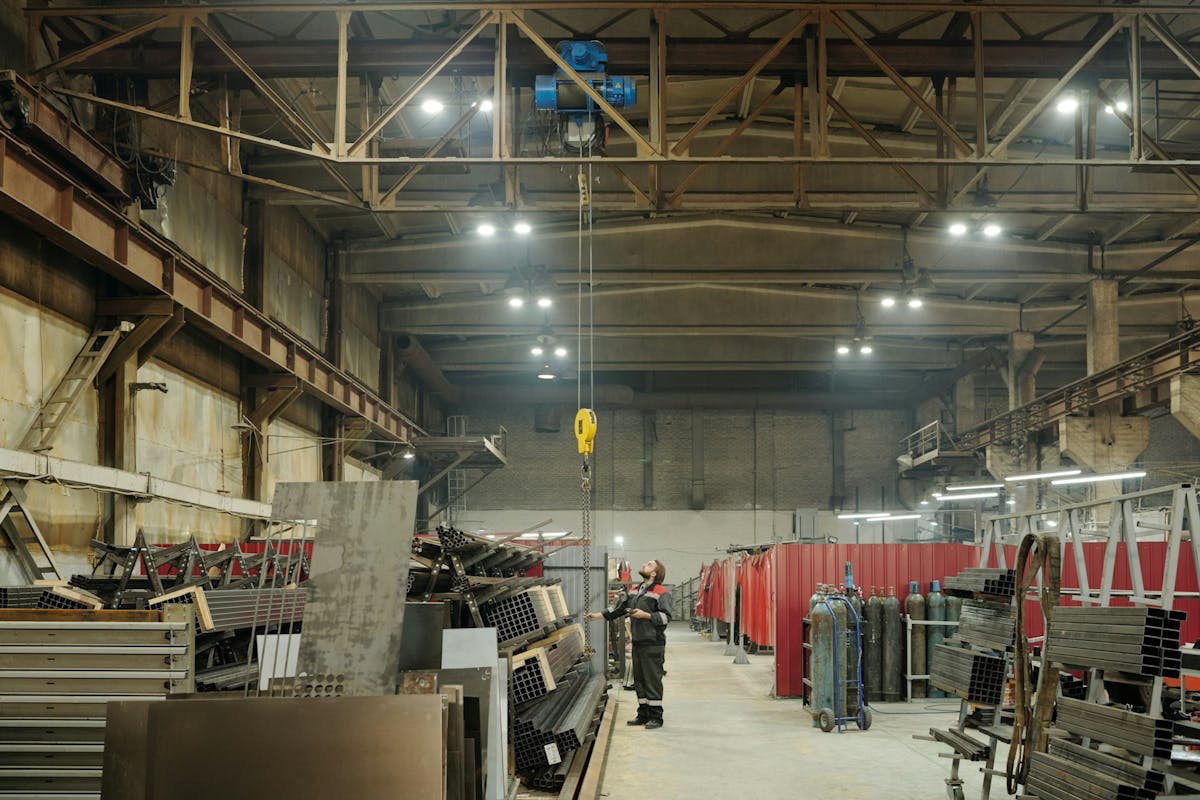Lean Manufacturing 101: Techniques for Operational Excellence


Lean manufacturing strips production down to its essentials—cutting waste and maximizing customer value. This approach originated at Toyota in the mid-20th century and focuses on streamlining operations to deliver exactly what customers want. The method identifies and eliminates various forms of waste: overproduction, waiting times, and unnecessary inventory.
By identifying and removing non-value-adding activities such as overproduction, waiting, and unnecessary inventory, organizations create more responsive and flexible operations. This mindset fosters continuous improvement and encourages every employee to contribute toward operational excellence.
This article explores the fundamental techniques and principles of lean manufacturing that help companies achieve superior efficiency and customer satisfaction.
Core Concepts: What is Lean Manufacturing?
Lean manufacturing is a mindset that drives efficiency and customer value. Three main pillars form its foundation:
- Waste elimination forms the foundation of lean thinking. It means finding and removing anything that doesn't add customer value—overproduction, waiting time, unnecessary transport, over-processing, excess inventory, unnecessary motion, and defects. Manufacturers who eliminate these wastes streamline their processes and maximize productivity.
- Continuous improvement (Kaizen) keeps lean manufacturing moving forward. Everyone from machine operators to executives constantly looks for ways to make things better. This ongoing pursuit ensures lean is a journey, not a destination.
- Value creation is the ultimate goal. It's about understanding and delivering what customers really want. This customer focus guides all lean efforts, ensuring improvements actually matter to the people buying your products.
These concepts work together to create efficient, customer-focused production. As waste disappears, processes become simpler, helping you respond faster to customer needs.
Types of Waste in Lean Manufacturing
In lean manufacturing, waste—or "Muda" in Japanese—is anything that doesn't add value from the customer's perspective. Spotting and eliminating these wastes is crucial for optimizing production. Here are the seven classic types of waste:
1. Overproduction
Overproduction happens when production quantities exceed customer demand or occur before they're required. This waste form consumes raw materials prematurely, increases storage needs, and hides other inefficiencies.
It often results from large batch processing, poor demand forecasting, or attempting to maximize machine utilization without considering actual customer needs. Overproduction tends to cascade through the value stream, creating additional waste in multiple areas.
2. Waiting
Workers standing idle while machines process, materials waiting for the next operation, or customers waiting for service all constitute this waste form. Causes include unbalanced workloads, unreliable delivery from suppliers, equipment breakdowns, lengthy changeovers, and poor scheduling.
Waiting often indicates process design flaws or insufficient capacity planning. The financial impact includes labor costs without corresponding output and missed opportunities to serve customers.
3. Transport
Transport waste occurs whenever items move without adding value. While some movement is necessary, excessive transport increases the risk of damage, extends lead times, and requires equipment and labor that add cost without value.
This waste form often stems from poor facility layout, disconnected processes, or centralized processing. Most transport waste goes unmeasured because companies historically considered it a normal part of manufacturing.
Automated guided vehicles and conveyor systems can also reduce handling damage but must be evaluated carefully, since automation sometimes makes waste more efficient rather than eliminating it. The goal remains minimizing any movement that doesn't transform the product toward what customers value.
4. Over-processing
Over-processing waste happens when companies perform work beyond what customers require or are willing to pay for. It includes excessive precision, unnecessary features, and redundant operations.
This waste sometimes comes from outdated standards, misunderstanding customer requirements, or feature creep without market validation. It might also stem from using overly complex equipment when simpler tools would suffice.
5. Inventory
Inventory that exceeds immediate requirements represents cash transformed into idle materials. Beyond the obvious financial impact, excessive inventory conceals quality issues, process inefficiencies, and equipment reliability problems.
It consumes storage space, requires handling and management, risks obsolescence, and delays problem identification. Inventory accumulates when production doesn't match consumption rates, often from batch processing or attempts to buffer against unreliable processes.
6. Motion
Motion waste includes unnecessary walking, reaching, bending, or searching that operators perform during their work. Unlike transport waste which involves moving materials, motion waste focuses on people and equipment movements.
This waste tires workers, reduces productivity, and often leads to ergonomic injuries over time. Motion waste typically results from poor workplace design, inadequate tools, inconsistent work methods, or disorganized environments where operators must search for what they need.
7. Defects
Defects represent complete waste—materials, labor, and processing time invested in products that don't meet specifications. Beyond direct scrap and rework costs, defects drive inspection expenses, customer dissatisfaction, warranty claims, and sometimes safety risks or regulatory violations.
They often trigger expediting, overtime, and special shipping arrangements that further increase costs. Defects typically stem from inadequate training, unclear specifications, inappropriate tools, inconsistent methods, or poor design.
The Five Principles of Lean Manufacturing
Lean manufacturing rests on five fundamental principles that guide organizations toward efficiency and value creation. Here's how they work and why communication matters for each:
1. Define Value
This principle focuses on understanding what customers truly want in a product or service, allowing you to cut anything they won't pay for. Determining value requires direct customer input and market research to identify which product features and services customers genuinely desire.
The goal is to distinguish between what adds value from the customer's perspective versus activities that merely add cost. For example, car manufacturers who focus on fuel efficiency and safety features—what customers actually care about—are defining value correctly. Good communication channels also help customer feedback reach decision-makers quickly, keeping your value definition accurate.
At every step, ask the question: "Does this add value from the customer's perspective?" Companies should also regularly review specifications against customer requirements, standardize processes to avoid variability that demands extra work, and ensure proper operator training so work is done correctly the first time.
Furthermore, value engineering techniques help identify opportunities to simplify products while maintaining functionality customers actually want. Rather than assuming more processing always yields better products, manufacturers should establish minimum requirements that satisfy customer expectations, then work to achieve those efficiently.
As markets evolve, customer preferences change, requiring manufacturers to continuously reassess their value proposition. Companies that excel at defining value conduct regular customer surveys, focus groups, and sales data analysis to refine their understanding of customer needs and desires.
2. Map the Value Stream
Value stream mapping means documenting every step in your production process to separate what adds value from what doesn't. This exposes waste and shows where to improve. Creating a detailed value stream map involves tracking a product from raw materials to customer delivery, noting time spent at each stage, inventory levels, and information flows.
The process also often reveals surprising inefficiencies in seemingly smooth operations. Using effective communication systems in manufacturing allows workers to report process problems in real time, which greatly enhances problem identification. Many companies use color-coded maps showing value-adding steps in green and non-value-adding steps in red.
These visual tools help everyone understand where waste occurs and inspire improvement ideas. Lastly, regular value stream mapping reviews help teams track their progress in eliminating waste and improving flow throughout the organization.
3. Create Flow
This principle focuses on making production smooth, with minimal interruptions or bottlenecks. Creating flow often means rearranging workspaces, improving layouts, and making smaller batches. Flow requires eliminating departmental silos and reorganizing work cells around products rather than functions.
This change typically demands cross-training workers so they can perform multiple tasks, reducing the need for material handling and shortening production time. Moreover, good communication helps workers quickly report and fix any disruptions. Flow implementation often includes analyzing take time—the maximum time allowed to produce a product to meet customer demand.
Production steps must also be balanced to work within this time constraint. Physical changes to the workplace might include moving machines closer together, introducing gravity-fed systems, or creating U-shaped work cells that minimize transportation.
Creating flow also involves addressing motion waste. This begins with direct observation of work processes, often using spaghetti diagrams to track operator movement or video analysis to identify inefficient actions. Workstation design should follow ergonomic principles, positioning frequently used items within easy reach and arranging equipment to minimize stretching or bending.
5S workplace organization methods also ensure tools and materials have designated locations, eliminating searching time. Standard work instructions specify the most efficient motion sequences for common tasks, reducing variability between operators or shifts.
4. Establish Pull
Pull production means making products only when customers want them, not based on forecasts. This cuts inventory costs and prevents making too much. It's closely related to just-in-time manufacturing.
Pull systems use visual signals like kanban cards to trigger production only when downstream processes indicate demand. Unlike push systems where production happens according to schedules regardless of actual needs, pull systems prevent overproduction, which is considered the worst form of waste.
For example, Dell's build-to-order system exemplifies pull. They start assembly only after a customer places an order. Pull systems require sophisticated coordination between suppliers, manufacturers, and distributors. Companies must establish reliable replenishment methods and backup plans for supply disruptions.
The benefits include reduced inventory carrying costs, less warehouse space needed, fewer obsolete products, and improved cash flow. Pull systems also increase flexibility, allowing manufacturers to adjust quickly to market changes without being burdened by excessive inventory.
Many companies also adopt hybrid systems, combining make-to-order for customized products with small buffer inventories for standard items, to achieve balance between customer responsiveness and production efficiency.
5. Pursue Perfection
Lean manufacturing encourages everyone to contribute ideas and constantly refine processes. Perfection doesn't mean flawless production but rather the continuous elimination of waste through small, incremental improvements. This requires establishing mechanisms for improvement suggestions, measuring progress with appropriate metrics, and celebrating small wins to maintain momentum.
Most successful inventory reduction efforts happen gradually, as reducing buffers too quickly can disrupt customer service. Companies often establish inventory targets that decrease over time as process improvements take hold.
Toyota's Kaizen culture, which encourages small, regular improvements, has led to decades of productivity and quality gains. This philosophy in combination with using a real-time communication channel that reaches every single one of your workers also helps spread improvement ideas across your organization, as collaboration is key. Organizations pursuing perfection conduct regular audits of their processes, hold kaizen events to tackle specific problems, and provide time for employees to implement improvements.
Management should also model the improvement mindset, examining their own processes and decisions. Creating a blame-free environment where mistakes are viewed as learning opportunities helps sustain the pursuit of perfection across all organizational levels.
Perfection also involves eliminating defects and requires shifting focus from detection to prevention—building quality into processes rather than inspecting it afterward. Statistical process control helps identify variation sources before they cause defects. Mistake-proofing (poka-yoke) techniques also prevent errors through physical design changes that make incorrect assembly impossible.
Implementation Strategies for Lean Manufacturing
Implementing lean manufacturing requires a structured approach and organization-wide commitment. Here are strategies to make your lean initiative successful:
Secure Leadership Commitment and Involvement
To gain and maintain leadership buy-in, engage top management early in the process and show lean's value through metrics and success stories. Including lean goals in manager performance evaluations reinforces its importance.
Leaders should actively champion lean principles and weave them into all strategic decisions. Leaders should also be mindful of factors that can affect employee well-being, such as managing workplace stress, to ensure a supportive environment conducive to lean implementation.
Moreover, visibility matters, so leaders should regularly visit work areas, participate in lean events, and recognize team successes. When leadership models continuous improvement, it signals to employees that lean is not a passing phase but a long-term commitment. Empowering managers to remove roadblocks and allocate resources ensures sustained momentum.
Develop Comprehensive Training Programs
Creating training tailored to different staff levels helps everyone understand their role in lean transformation. Running ongoing workshops and on-the-job coaching reinforces classroom learning with practical application. Appointing internal lean champions or mentors provides accessible expertise when questions arise during implementation.
Training should cover technical tools and the underlying philosophy of lean, helping employees understand not just how but why certain practices matter. Programs should also include hands-on simulations that demonstrate lean principles in action, making abstract concepts concrete.
Moreover, assessment mechanisms help identify knowledge gaps that require additional training. Refresher sessions prevent skill deterioration and address emerging challenges. Training materials should use clear, simple language with practical examples relevant to your specific industry and operations. Visual aids, quick-reference guides, and training videos make information accessible during daily work, supporting application beyond the classroom.
Start with Pilot Projects Before Scaling
Build momentum and prove lean's value with small-scale pilot projects. Picking a specific area or process for initial implementation allows focused effort and visible results. Setting clear goals and metrics for the pilot creates accountability and helps evaluate success objectively.
Documenting lessons learned and wins also provides valuable insights for future expansion. Using pilot results to gain support for wider implementation helps overcome resistance through demonstrated benefits. Pilot areas should balance ease of implementation with potential impact—look for processes with obvious waste that affect customers or business results.
Cross-functional team composition for pilots ensures diverse perspectives and builds wider organizational capability. Rigid adherence to plan should be avoided; pilot projects offer learning opportunities that may require approach adjustments. Time-boxing pilot duration (typically 3-6 months) creates urgency and prevents analysis paralysis.
Establish Clear Metrics to Measure Progress
Investing in user-friendly data collection tools makes measurement part of daily work rather than an additional burden. Training staff in collecting and interpreting data ensures quality information and appropriate responses to trends.
Aligning performance measures with lean goals prevents unintended consequences from mismatched metrics. Effective measurement systems balance leading indicators (predictive measures) with lagging indicators (result measures) for comprehensive monitoring.
Metrics should focus on process performance rather than just outcomes, helping identify improvement opportunities. Visual management boards displaying real-time metrics also increase transparency and promote peer accountability. Lastly, regular review sessions examine metric trends and initiate corrective actions when needed.
Create a Communication Infrastructure
Build a robust communication system that provides real-time updates on lean initiatives, enables two-way communication for feedback and ideas, and reaches all employees regardless of location or role.
Communication should occur through multiple channels—visual displays, regular meetings, digital platforms, and informal conversations—to ensure message reinforcement and boosting employee engagement. Translation services and understanding best practices for hiring non-English speaking employees ensure non-native language speakers fully participate in improvement efforts.
Communication should include not just what is changing but why, helping employees understand how specific initiatives connect to organizational objectives and customer value. Recognition programs should also highlight individuals and teams who exemplify lean principles, making success stories visible across the organization.
Transform Your Lean Journey with Better Communication
Effective communication is a cornerstone of successful lean manufacturing. For frontline employees who drive day-to-day production, receiving timely updates, sharing feedback, and staying informed about process changes is critical to eliminating waste and maintaining operational flow. Lean initiatives thrive when workers can quickly report issues, participate in continuous improvement, and access training without interrupting their tasks. Additionally, supporting a multilingual workforce and managing shift schedules efficiently are key to sustaining productivity and engagement.
Yourco’s SMS-based employee communication platform addresses these challenges by leveraging familiar, accessible text messaging to connect your entire frontline workforce instantly. It removes technological barriers such as app downloads or internet dependence, enabling seamless, real-time communication across diverse teams. This approach helps maintain alignment with lean principles and fosters a culture of responsiveness and continuous improvement.
Key benefits include:
- Real-time Alerts and Two-way Messaging: Immediate notifications about process updates, quality concerns, or production adjustments, along with the ability for workers to report issues directly and rapidly.
- Multilingual Support: Automatic translation in over 135 languages and dialects ensures clear communication across diverse employee populations.
- Streamlined Shift Scheduling: Simplifies shift swaps and coverage requests, reducing downtime and ensuring optimal staffing without adding supervisor workload.
- Training and Recognition Delivery: Directly sends micro-learning modules and updates to employees’ phones while enabling managers to recognize performance tied to lean metrics.
- Analytics and Insights: Provides frontline intelligence and insights for multiple manufacturing plants, enabling you to dive into each location’s performance and productivity.
By integrating these communication capabilities, Yourco empowers manufacturers to sustain lean manufacturing efforts and unlock operational excellence.
Try Yourco for free today or schedule a demo to discover how effective communication can transform your lean journey.



